Aleksandra Jarosz Laszlo
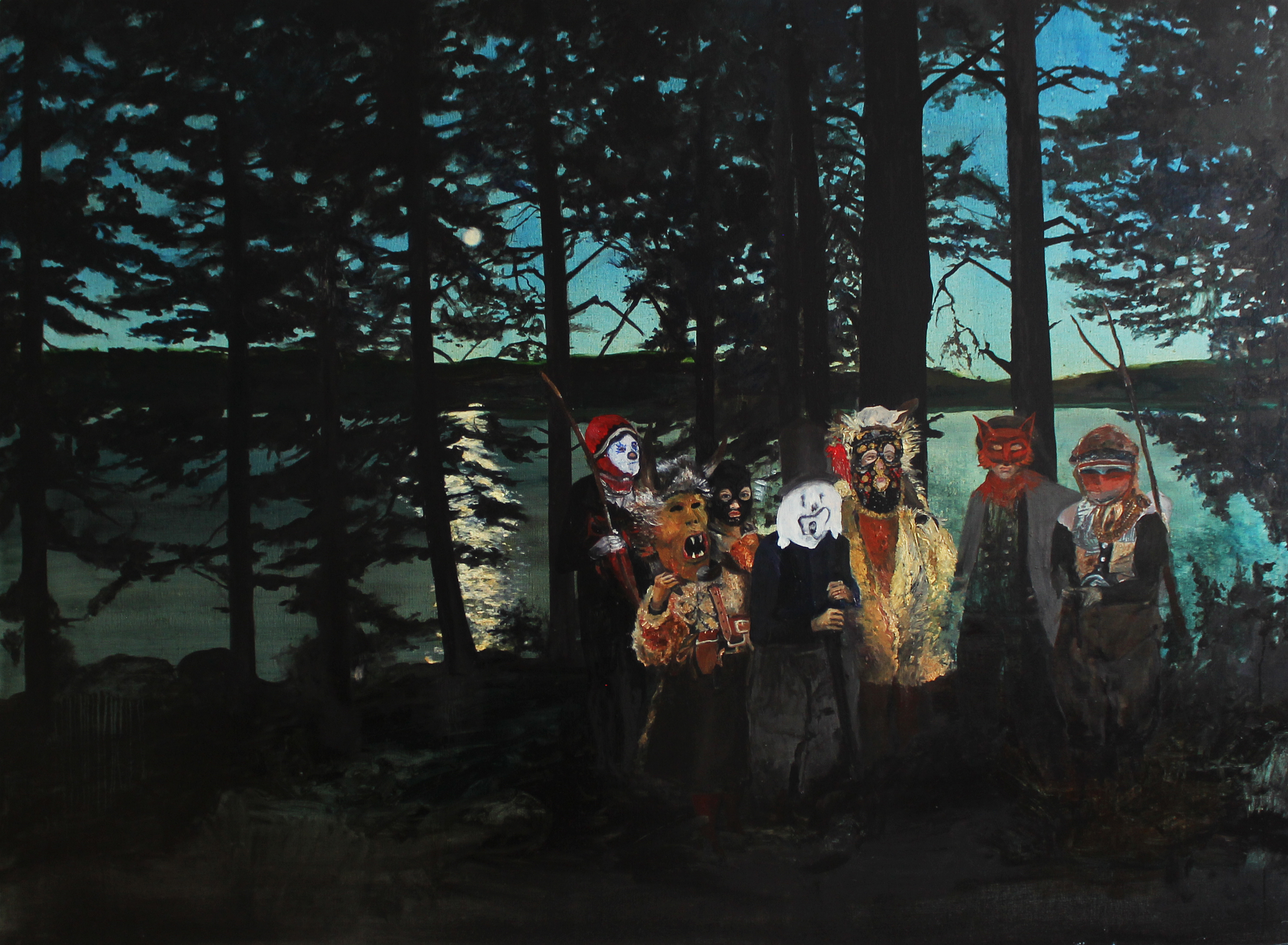
SELECTED Works
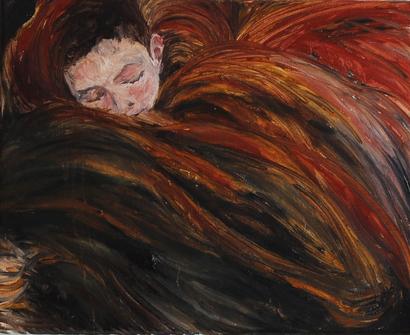
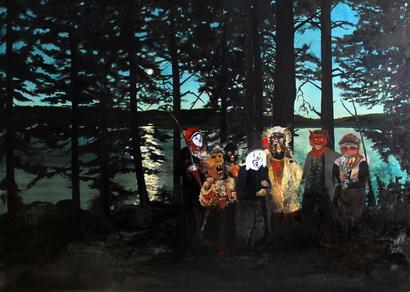
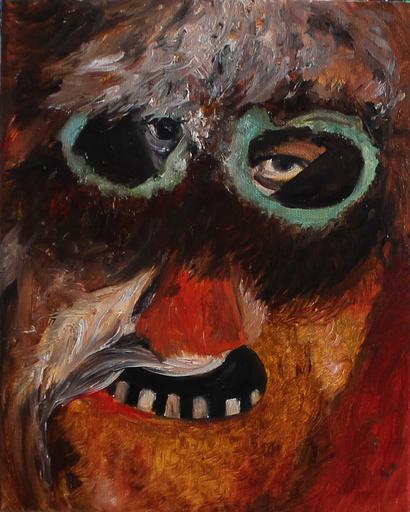
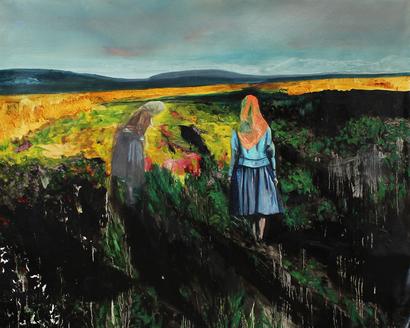

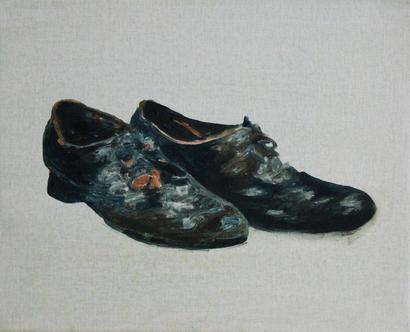
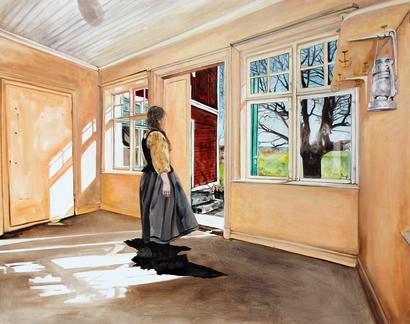
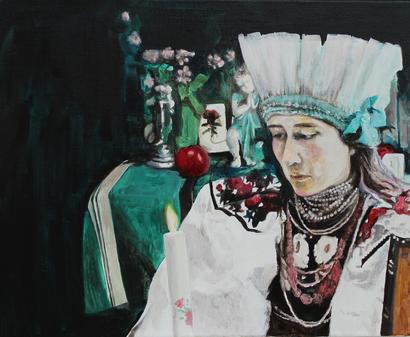
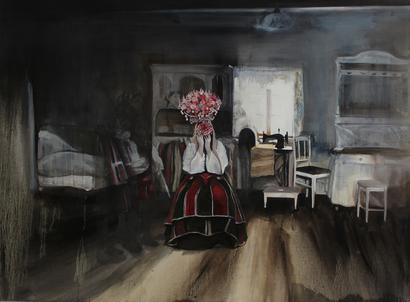
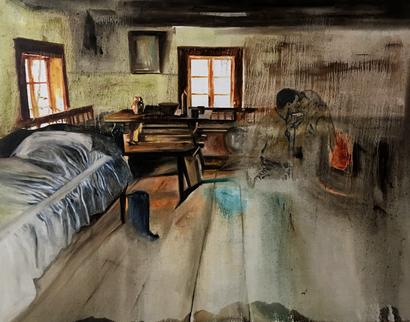
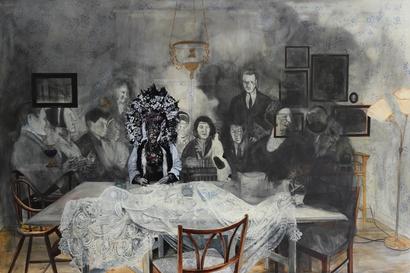
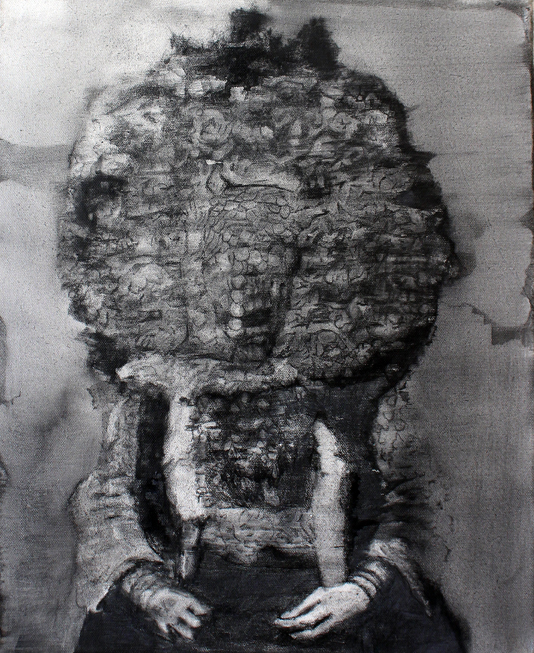


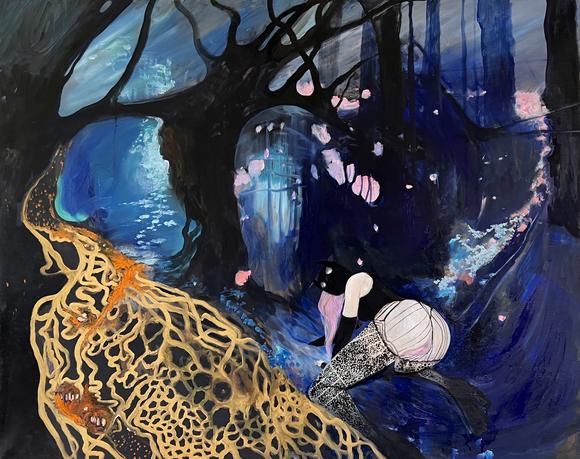
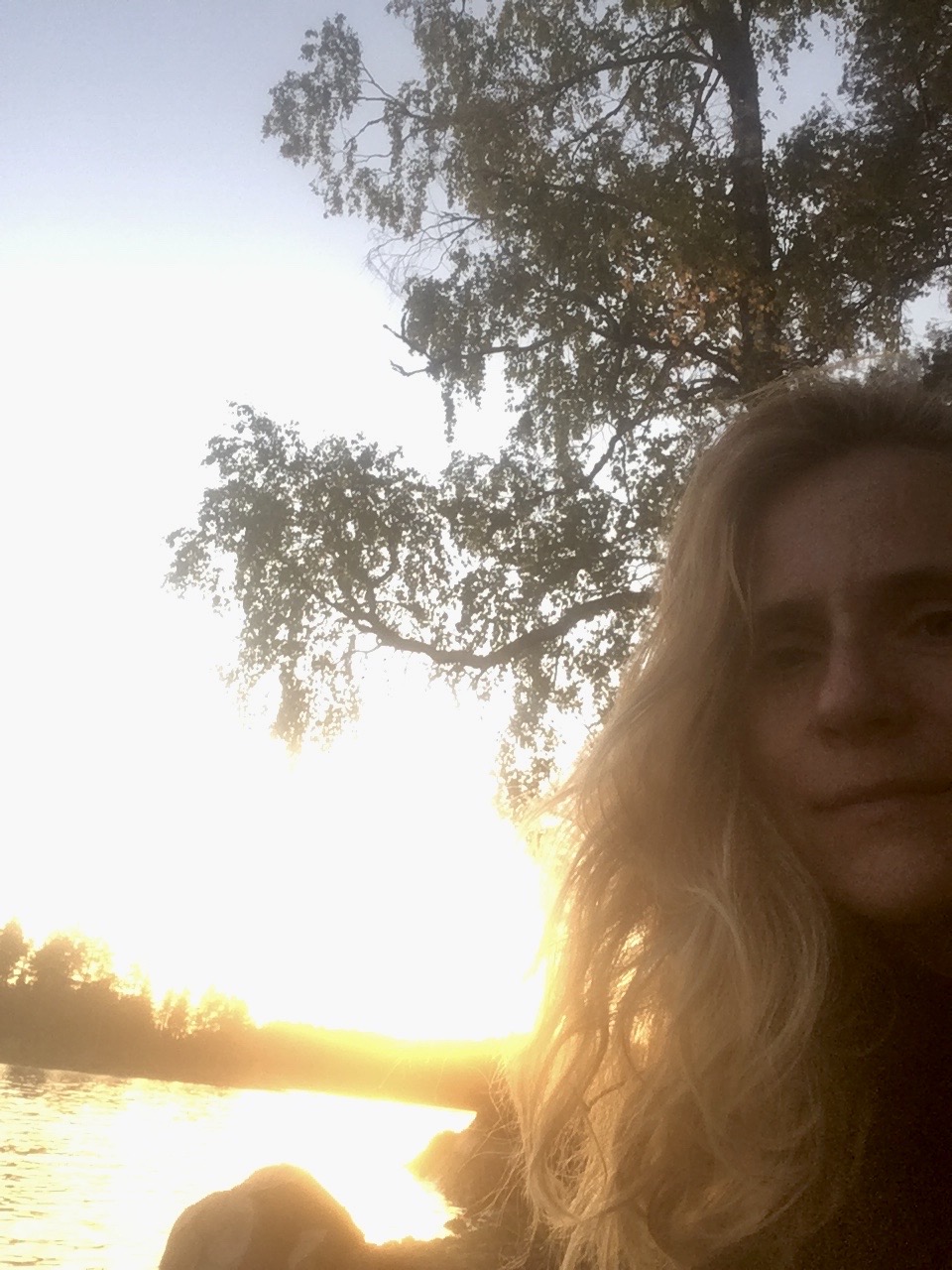
Living on the farm in Dalarna, Sweden, surrounded by forest and hills and I’m inspired by local folklore. My works depict female stories through myths and folk beliefs. I mix elements like goddesses, hybrids, creatures, and modern women's self-representation. Despite structural differences, I find properties or behaviors like micro stories that their parts do not have their strength or larger meaning, and emerge only when they interact in a wider whole.
In my current project (2014- ongoing), I collect folktales, folk beliefs, and local myths and traditions. Myths have always played a fundamental role in society, and some traditional groups consider myths to be true accounts of their remote past. I paint a new copy of an existing image, which I allow to change in a process as I add new layers, creating a hybrid of time, characters, and places, which I can relate to. My work is, on the one hand, characterized by an idiosyncratic interpenetration of realism and fantasy, a worldly mind, rationality, and clarity of observation, and on the other hand by folly, outlandishness, and fallacy.
Folklore can be perceived as helping to create meaning and coherence in life and providing hope and strength. Drawing on the heritage of ancient folklore and magic in figurative painting, I use old stories to create new visual lexicons.
My work combines cosmological thinking, complex mythologies, and spiritual vocabularies with my own imagined worlds. I synthesise them into stories that are both futuristic and archaic. By incorporating cultural or historical features in my stories, I use the ordinary to depict the epic, the universal, and the transient, in a quest for worlds beyond my own.
Through a transdisciplinary approach, my work critiques understandings of nature, gender, and sexuality that attempt to objectify and naturalize women. These norms are justified through evolutionary narratives exclusively permitting the male gaze. Everything that does not fit this norm is considered provocative, “erotic”, or promiscuous. These norms have proven detrimental to women. Women have been and still are discriminated against in today's life due to unrealistic beauty standards, age, deeply ingrained beliefs, and societal values about women's sexuality, violating their sexual and reproductive health and rights. My work explores female perspective, sexual expression, and the objectification of women, bodily autonomy, themes of pleasure, love, and desire in the context of female sexuality and myths.
I was born and raised in the industrial city of Katowice with extensive art studies in London (BA (Hons) Fine Art at Central Saint Martins) and Stockholm (MA Fine Art, Konstfack University College of Arts, Crafts and Design), and now live in a rural area in the heart of Sweden.
I belong to the second-largest ethnic national minority in Poland. In ethnographic literature, Silesians were the name for the indigenous population of Slavic origin, mainly using the local dialects of Polish with numerous Germanisms and Czechisms. I am not interested in the national use of ethnic identity as a political tool, but in my attempt to understand the complexity of my origin and what it means to be frequently treated as a stranger in my land and as a foreigner in Sweden.
Solo Exhibitions
2025 Aurora, you are beautiful- Galleri Svarta Gran, Sweden
2022 Metamorphosis – Rättviks konsthall, Sweden
2018 Changing geographies, Museum Anna Nordlander, Sweden
2016 Den begravda jätten, Avesta konsthall, Sweden
2016 Negotiating Authenticity. In Search of an Ideal, Spring Exhibition, Konstfack University College of Arts, Crafts and Design, Sweden
2016 Face Negotiation, Galleri Hörnan, Falun, Sweden
2015 Negotiating Authenticity. In Search of an Ideal, Fine Arts Master Exhibition, Konstfack University College of Arts, Crafts and Design, Sweden
2015 The Tacit Dimension, Rättviks konsthall, Sweden
2014 Face Negotiation, Student Union Gallery, Konstfack, Sweden
2013 Aesthetic as identity, Galleria “Clou – Circolo d’arte contemporanea”, Ragusa, Italy
Selected Group Exhibitions and projects
2024 Det oförutsägbara, Uppsala konstmuseum/Uppsala stadsteater, Sweden
2020 Liljevalchs konsthall, Vårsalongen 2020, Stockholm, Sweden
2018 Liljevalchs konsthall, Vårsalongen 2018, Stockholm, Sweden
2017 Anna-Lisa Thomson Till Minne, Uppsala konstmuseum, Sweden
2016 Stipendiatutställningen, Konstakademien/The Royal Academy of Fine Arts, Stockholm, Sweden
2016 Moving Art Project,Stockholm, Falun, Karlstad, Växjö, Jönköping, Malmö, Göteborg, Östersund, Sweden
2015 Hungry Eyes, Gallery Platform, Stockholm, Sweden
2014- 2015 Dalagrafik på väg, Leksands kulturhus, Gallery Nadezda Petrovic/Serbien, Tobetsu/Japan
2010 The Columbia Threadneedle Prize Finalist, London
2010 Celeste Prize Finalist, The Invisible Dog Art Centre, New York
2006 BP Portrait Award Finalist 2006, National Portrait Gallery, London
Grants and awards
2016 Anna-Lisa Thomson Till Minne, Uppsala konstmuseum
2016 Webers/Ribbing/Beskow stipendium till unga konstnärer och konststudenter, Konstakademien/The Royal Academy of Fine Arts
2015 Byggnads Kulturstipendium
2013 7th International Arte Laguna Prize, The Special Prize Art Gallery
2012 Atlantic Center for the Arts, artists-in-residence program
2012 500 Portraits - BP Portrait Award
Workshops, talks, projects, presentations, teaching
2020- Konsthallen Meken, Curator, Artistic Director, Sweden
2024 Seminar: Palaces of Pleasure/Historic Sites in Contemporary Culture, The Prague City Gallery
2024 SWEDISH ARTIST RESIDENCY NETWORK meeting in Småland, Sweden
2019-2020 Högskolan Dalarna, visiting teacher art education, Sweden
2018-2020 Borlänge Modern, curator, Sweden
2016 -2017 Liljevalchs konsthall, art educator and host, Sweden
2014 "Vi lämnar avtryck”, graphic art project, Statens konstråd, art project for youth, Sweden
2013- 2014 Dalarnas Museum, art educator, Sweden
Representation
Uppsala konstmuseum, Västerås konstmuseum, Region Dalarna, Avesta kommun, Region Uppsala, Leksands kommun, Rättviks kommun, Sveriges Hembygdsförbund, Gagnefs kommun